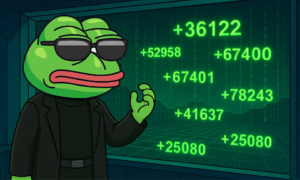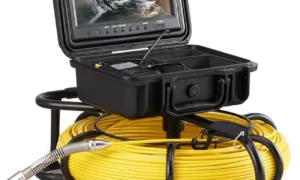Like every new and catchy innovation, DeFI has had its fair share of ups and downs. Although the financial system has managed to establish itself at the forefront of the crypto narrative, there are pressing issues that sometimes expose flaws in the current operation models of DeFI protocols. Much of this conversation centers around the regulatory standing of DeFI and the fraud-prone nature of liquidity models. For DeFi to achieve the next phase of growth, stakeholders must develop custom-made solutions that will both preserve decentralization and offer users added protection.
To fully grasp the urgency of this issue, let’s take the recent DeFi scam involving UniCats protocol as a case study. On the 5th of October, Cointelegraph reported that the developer of UniCats protocol, a project with similar functionalities to Yam Finance and SushiSwap, had exploited a common practice that permits protocols to withdraw an unlimited amount of specific tokens from users’ wallets. Due to this loophole, the developer managed to cart away with the digital assets of yield farmers as one user lost over $140,000 worth of tokens.
As always, the lesson learned every time the DeFI community falls victim to scams is that the technology is still nascent. And as such, there are several ways bad actors can capitalize on the demand for decentralized protocols and run fraudulent projects. While this is inevitable, stakeholders need to implement solutions focused on protecting participants of the DeFi market. Unless such systems become mainstays in the sector, regulators will be forced to swoop in and introduce stringent rules. Already, regulators around the world have begun to notice the inherent risks of the unregulated DeFi landscape and are looking for ways to curtail the excesses of DeFi developers.
Fortunately, solutions like Liquidity Dividends Protocol (LID) are leading the way in the quest to put an end to rug pull scams that have become the bane of the DeFi ecosystem. The project is working on enabling trustless yield farming systems with sophisticated models of locking liquidity to ascertain that the digital assets of investors and users are safe. Unlike other liquidity locking solutions presently operating in the market, LID protocol ensures that tokens are locked in a non-custodial and automated manner. Following the launch of LID, several protocols have begun to take advantage of this initiative to prove the viability and integrity of their projects to potential investors.
Owing to the growing importance of similar projects to the safety of DeFI investors, I, with the help of Carlsbad Sunshine, CEO of LID protocol, decided to explore the role of standardization and investor protection in the emerging market. Below is an excerpt from our discussion:
Recently, you stated that you had hoped that breakthroughs in users’ protection would have preceded the DeFI boom. Now that LID and a couple of other projects are solely focusing on this, do you think that everyone involved has done enough to put a stop to rug pull scams? UniCats’ developer managed to steal yield farmers’ tokens because of some of the common practices, including the utilization of God mode keys, that put investors at the mercy of development teams. Does this clash with the fundamentals of decentralization that is core to the success of DeFI?
That’s a trick question. From a fundamental perspective, the ability to give complete control to the developers & community is exactly what DeFi is all about. With centralized exchanges removed from the equation, the community is free to build, list & trade as they see fit. Although this is an entirely new concept to the space, it may not always be the best in terms of investor security which will likely become a threat to the success of DeFi.
How are you and your team putting an end to rug pull scams?
The LID protocol is used to launch projects with permanently locked liquidity. Immediately upon launch, the token will be listed and liquidity tokens created from the LGE will be sent to the burn address, where no one, not even the LID team, will be able to access or recover the tokens. This, as well as code audits, help protect against bad actors whose sole intent is to pull liquidity immediately upon listing. This helps ensure a safe LGE launch, however keep in mind that no one can control what happens after the LGE. A project may fail, or the team may try to pull an elaborate scam. Unfortunately we cannot control human beings, but we can try our best at making sure initial investors find some form of security when investing.
What about the social referral aspect of LID’s business model? How does this work?
The referral system is pretty simple. By simply connecting your MetaMask onto LID’s Dapp, you’ll be given a referral code that connects to your wallet. Anyone that participates using your referral code will give you a reward of 2.5% in ETH. This system is put in place to reward individuals that are interested in affiliate marketing.
From your explanation, I see that the LID token is integral to the success of your referral and reward model. What are the other benefits of the token?
LID is the governance token for the LID Protocol. We’ve built the template for the Lid Dao on Aragon, and are working on setting up the right legal structure for the Lid Dao. Once the Lid Dao is fully set up, LID stakers will have full control over the protocol’s budget.
Tell us more about the LID protocol’s LIFTOFF initiative and how it looks to promote a safe environment for investors?
LIFTOFF was initially being developed as a traditional self-serviced liquidity locking protocol. This would’ve been a competitor to some of the other liquidity locking protocols such as Unicrypt & Bounce, however these sort of products still fall under threat to rug pulls. Recently, $CORE launched with some interesting features that helped influence what the ‘new’ LIFTOFF is aiming to be. It’s a bit complex to fully explain right now, but the TL;DR is that investors will be contributing ETH that creates permanently locked liquidity while farming out the token total supply within an emission distribution system.
What are the criteria used in the onboarding process of your LIFTOFF ILO launchpad?
Because LIFTOFF will be a self-serviced platform, it will require relatively simple information. The information is as follows: 1. Wallet Address, 2. Project Name, 3. Logo, 4. Hero image (Open Graph), 5. Ticker, 6. Website, 7. dAPP, 8. Project Description + Social Media Links.
Can you give us more details about the projects that have capitalized on the LID protocol’s innovative approach to locked liquidity and community growth? Were they able to achieve their ILO goals?
We’ve had over 10 successful ILOs. One interesting thing about these projects, is they often end up having more long term growth because of the incentive structures built into LID presales. You can see a few of these projects listed on the https://sale.lid.sh homepage.
Some believe that it is only a matter of time before regulators begin to introduce regulations targeted as the emerging DeFI sector. How true is this?
I believe it’s very true. In fact I think that the biggest threat to the DeFi sector is the coming regulators, and those regulators will shine a spotlight on the industry if we fail to police ourselves.
What is your thought on the recent proposal by the European Commission that stipulates that crypto issuers must be incorporated as a legal entity? Will this affect the DeFI market in any way?
Regulations will always affect any market. Many of the times it does so in a negative manner. By creating barriers & risk to entry, the legitimate developers will be pushed away from the industry, while the bad actors will continue to thrive. Scammers will not stop scamming simply because the government says they shouldn’t. They are already breaking the law as it is. So if regulators come and scare away legitimate projects, the scams will still run rampant until they drain the funds from the community, ‘til there’s nothing left to drain.



































